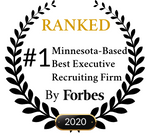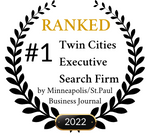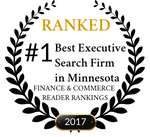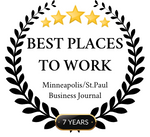As an executive recruiter focused on the MedTech and Life Science industries, I often speak to professionals with extensive industry experience looking for a new opportunity. What’s often surprising is how many of them underestimate their LinkedIn profile's role in landing their next role. After nine years of partnering with small to mid-sized health technology companies to find and vet top talent, I want to emphasize the critical role of the LinkedIn profile.
I have shared some tips, below, to help you update your profile. While each of them can be applied to all industries, I’ve tailored these to the Medical Device industry.
Use LinkedIn to Show Your Professional Brand
Before going into the specifics of what to change or add, it’s important to understand that building your LinkedIn profile is first and foremost a branding exercise. To do it well, you need to have a solid sense of what characterizes your professional identity, what image you want to project, and what distinguishes you from others in your field. This is a great opportunity to articulate a narrative of your accomplishments, strengths, and professional approach. Once you've identified your professional brand, the key is to incorporate it consistently throughout your LinkedIn profile.
Craft a Dynamic and Captivating Profile
Fill Out Important Profile Sections
One thing a lot of candidates overlook is that, for a professional recruiter like me, LinkedIn is a Boolean search engine. Fully filling out your profile with quality information makes it far more likely I will find your profile before those of your peers because of LinkedIn’s algorithm. At a minimum, ensure that you have thoroughly completed the most relevant sections, including Headline, Location, Industry, About, Experience, and Education. I also recommend filling out the “Open to Work” section (more on this later). When you complete these fields with meticulously constructed language, you heighten your visibility in recruiter searches and create a lasting impression with potential employers.
Add a Profile Photo
According to LinkedIn, profiles with professional photos are 14 times more likely to be viewed than those without. For this industry, I recommend considering a professional-looking, high-quality photo that represents you well. Avoid pictures with pets or other people, selfies, or poorly cropped photos.
Don’t Overlook Intro Sections
I want to highlight two sections that come into play often in a search: Industry and Location. If you’re in the medical device industry, I highly recommend choosing the Medical Equipment Manufacturing Industry. For Location, if you’re near a major metro area, choose the relevant greater metro area versus a suburb. You’ll show up in results more often; more results equal more opportunities.
Use Available Job-Seeking Features
If you haven’t used it, consider turning on LinkedIn’s “Open to New Opportunities” option in the About section. (The link to enable this is below your profile picture and headline and says, Open To.) You can even choose to have it only show to users who pay for LinkedIn Recruiter if you’re reluctant to advertise to everyone that you’re looking for. This is more discreet while allowing you to communicate a lot of information about what you’re looking for. (While LinkedIn takes steps to prevent recruiter users at your current company from seeing your Open to Work status, they can’t guarantee it.)
You can and should list the following: multiple job titles you’re seeking, locations which could include relocation targets, when you can start, and workplace types you’d consider (onsite, remote, etc). LinkedIn Recruiter users can tailor searches to only show candidates who have enabled the Open to Work status, which is why this is one of the first tips I give anyone actively considering a career move. If you’re uncomfortable enabling the Open to Work status, the next best step is to respond to more LinkedIn Recruiter messages when received, even if you’re saying you aren’t interested. This is because LI Recruiter users often tailor their searches to show candidates who have recently been active on the platform.
Keep Keywords and Your Audience Top of Mind
As I mentioned, LinkedIn isn’t just a social media platform but a search engine. Keywords are integral in search engine optimization (SEO). Incorporating the right ones into your profile will play a big role in making you stand out and be found more often. As you build your professional profile, use the words, phrases, and abbreviations prioritized in your industry and by the hiring managers you’re looking to attract. You want these words to naturally fit in the different sections of your profile and not be listed like hashtags. The best sections to place this information are near the top: your Headline, Summary, Skills, and Experience sections. Don’t wait till the Accomplishments, Skills, and Endorsements sections to list these very important keywords and other highly relevant information.
Keywords change over time, so you’ll need to refresh them occasionally. Start with a search on LinkedIn or Google for job postings that appeal to you. Don’t exclude roles that aren’t local. If they have good details and are specific enough to your industry and job preference, they’re a great resource. After you’ve found a few job descriptions, start making a list of keywords that you see appearing in multiple job descriptions that you can weave into your profile while staying honest about your experience.
Below are two examples of the types of keywords that I, as a recruiter, often look for when searching for different Medical Device Industry positions.
Example 1. Group Product Manager: keywords and phrases might include upstream and downstream marketing, product launch, portfolio planning, VOC, KOL, etc. Because the type of products you’ve worked on, device class, or disease state can play a part in your appeal to a hiring manager in a product management/marketing search, consider also mentioning keywords like neurostimulation (DBS, SCS, PNS, etc.), orthopedic devices, class II, class III, diabetes, heart failure, etc. Reminder: Don’t assume that every person viewing your profile or resume will know what devices your past employers made. They may not take the time to figure it out.
Example 2. Sr. Director of Clinical Affairs: keywords and phrases might include strategic planning/clinical strategy, CIP, GCP, etc. Don’t forget to include relevant certifications. Keywords that describe the clinical studies you’ve worked on can be critical, so include phrases and terms like as pre- and post- market, IDE, PMA, double blind, pivotal trial, sham controlled, etc. Even more than for the Group Product Manager, clinical positions at this level should include keywords related to disease state, class, and device type you’ve worked with.
Write a Captivating Headline
Headlines broadcast who you are professionally and have the power to generate instant recruiter and employer interest with just a few phrases or sentences. While it’s ok to include your current, last, or desired job title, you’ll do yourself a disservice if that is the only thing you include, as this area is important in LinkedIn’s algorithm. Compare the typical headline, below, to one that is sure to get more attention.
Typical Headline: VP of Quality
Enhanced Headline: Vice President | Quality Culture Champion | ISO 9001 & 13485 | Transformational Change Leader
Craft an Attractive Summary
The best section to communicate your professional brand is the About section. Keep this section in the first person. Share your career story, drivers, and goals. Start by introducing your professional self and what you do and bring to a company. In bullet or paragraph form, highlight your achievements, experiences, or key skills. If you chose bullets, format them in a paragraph versus a long list with one bullet per line. You can also share information about yourself outside of work or a call to action.
Highlight your Professional Experience and Achievements
Include past and current positions going back 10-15 years (or longer if they’re relevant to your current search). Include titles, companies, and dates. My favorite format is a sentence, perhaps two if required, that helps a reader understand your role and company from a high level, followed by bullet points that help break up the content visually. Adapt the information to reflect the roles you hope to move into while keeping it accurate to your expertise and past roles. As you describe your experience, integrate keywords and emphasize your results and accomplishments. Highlighting your outcomes will have a larger impact than a bullet pulled directly from a vague job description.
Many hiring managers and companies are hesitant to hire and invest in people with a history of moving jobs frequently. When listing your experience, remember how you structure past roles and the information you include. If your company was acquired or changed names, try to incorporate it in one company entry with a sentence about the changes, or include a sentence at the top of a new entry about the acquisition, merger, etc. If a job ended because of a contract, especially if you were there for less than two years, put the word contract next to the title in parentheses or early in the description. If a company closed, had a reduction in force, or a large layoff you were a part of, especially if you were unemployed for a time after, you can include a short sentence with this information in your description of your role there. If you’ve had multiple jobs at the same company, don’t create a new company entry for each new title; add a job within that company entry and the specific dates for that position.
By following these steps, you will boost your new job prospects by showing up more frequently - and more impressively - in recruiter and employer LinkedIn searches. When you’re ready to find that next great role, I hope you’ll update your profile and contact me. I would love to learn about your career goals!







